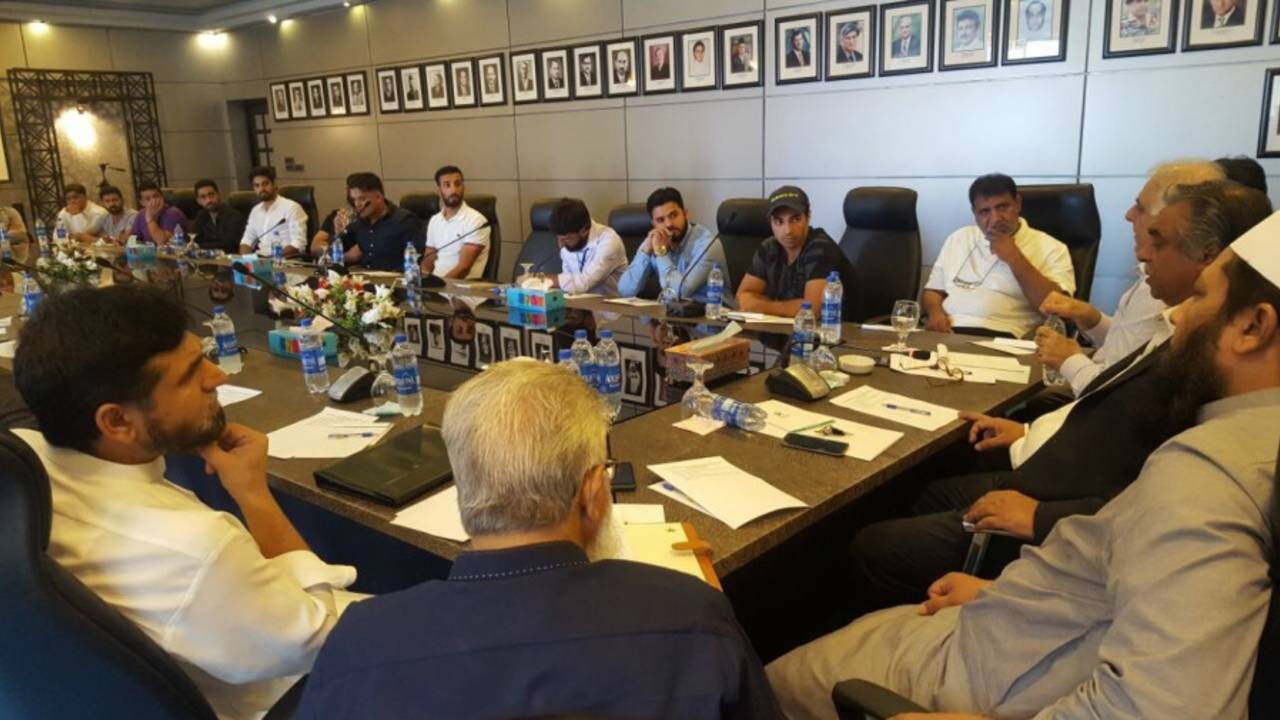Radical overhaul for QeA Trophy on the cards
To improve the level of experience in domestic cricket, the PCB could introduce a draft system to pick players into regional teams for the Quaid-e-Azam trophy
Umar Farooq
13-Jul-2017
A draft system could change the way players are picked for their domestic teams • PCB
Pakistan's domestic structure is no stranger to change but next season might see one of the most radical changes imposed on the country's oldest, most prestigious first-class tournament, the Quaid-e-Azam trophy. For the first time, a draft system could be used to pick regional players to play in the QeA.
The PCB is yet to officially unveil the change and it has to be approved by the board's governing body, but a board official confirmed to ESPNcricinfo that the idea - which emerged from the board's Domestic Affairs committee - has been mooted for the upcoming season.
The structure of the tournament has been retained from the previous season; 16 teams will play - the top eight regional teams (out of 16) and the top eight departmental teams (out of 12). Until now, the PCB selectors, along with regional coaches, choose 20-man squads of a regional team. That squad is primarily composed of players who have performed at the inter-district levels below first-class cricket.
The new system could involve 12 players for each squad allocated through a draft process, and the other eight selected in traditional fashion.
The 140-strong pool for the draft will be made up of players who are part of departmental teams which didn't qualify for the QeA trophy. The rationale behind the plan, the official said, was to make the tournament more competitive, with each region populated by more experienced players.
Historically, players come through the first-class circuit after playing senior inter-district cricket. High-performing players move to the departments, who offer them employment and an opportunity to play cricket.
The structure of Pakistan's domestic format has been changed many times over the last decade. Previously, regional and departmental sides competed separately in different leagues for several years before being put together again in 2008. Since the turn of the century, regional teams have been gradually emasculated as the PCB has centralised the running of cricket. That has, in turn, led to greater dependence by regional associations on the board, a weakening of regional sides, and an entrenched belief in the PCB that politics have hampered meritocracy in regional selections.
Regional associations are made up of various districts with registered clubs. Through an electoral process, clubs vote for a president, secretary and treasurer to run the association. A worry in the PCB is that the selection of regional players could be unduly influenced by the clubs who vote. That often leads to players coming through the system who are not believed to be competitive enough at the first-class level.
The changes have to be formally approved by the Board of Governors (BoG), who will meet on July 28. The Domestic Affairs committee includes two regional association heads, but at least three heads of regions ESPNcricinfo spoke to expressed serious concerns about the plans.
"Regions are the major nurseries and there is a full mechanism in place for a player coming up covering every level from club cricket to grade 1," a regional head said.
"If 12 players already in the system will be selected through draft then how will the region be relevant? What are we going to do with our inter-district players? Where do they go, then? Every year, new and young talent comes up, gets into the system and develops with these tournaments. With a draft system for selection, we are going to pick same players all over again, who had been in the system for last 10 years."
Included in the many things that have changed in the QeA over the last decade is the make of the cricket ball. The PCB has now approved Dukes balls to be used in first-class cricket, replacing the locally-produced Grays. Australian-made Kookaburra balls were used in the 2012 season before the PCB reverted to Grays - who had been in business with the board since 1973. The Kookaburra ball, however, will still be used for white-ball cricket in the country. The rationality behind importing Dukes balls, which are more expensive, is to prepare for the two-Test match series in England, according to a PCB official.
Umar Farooq is ESPNcricinfo's Pakistan correspondent
